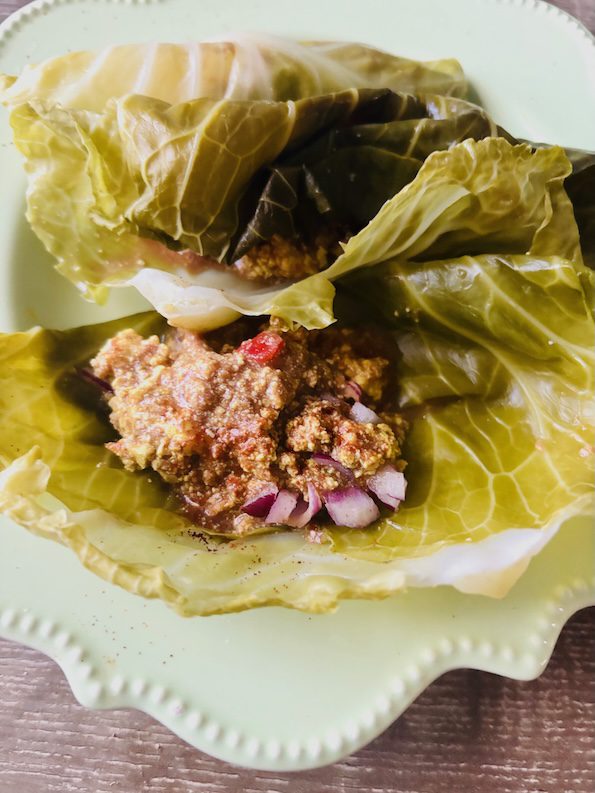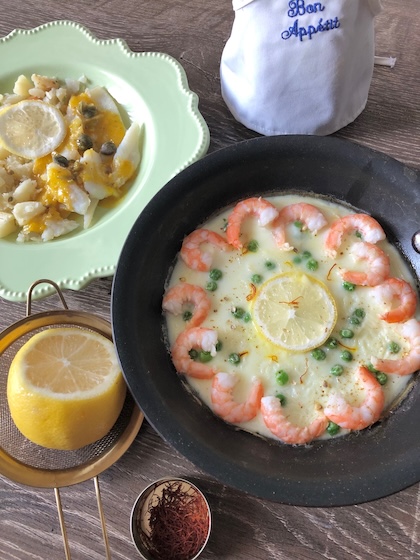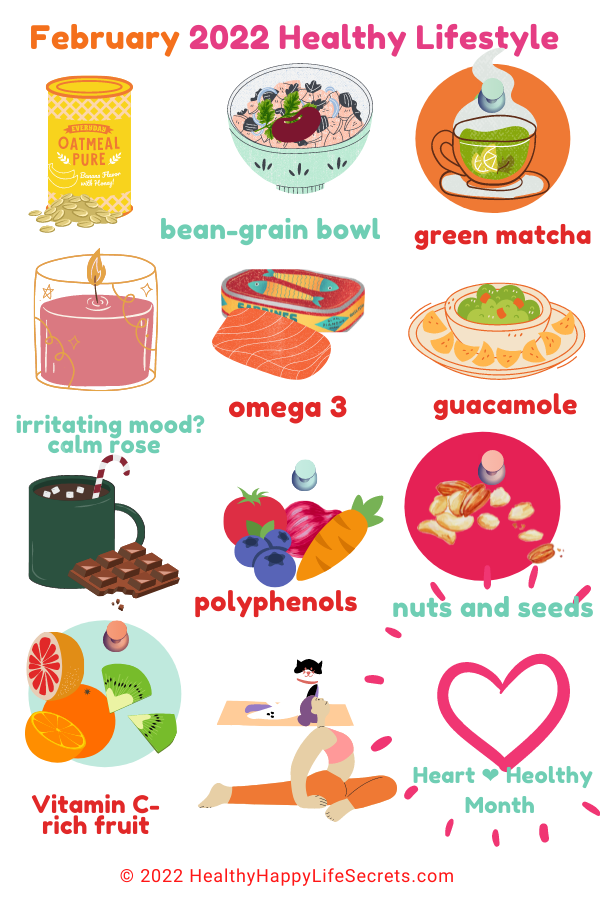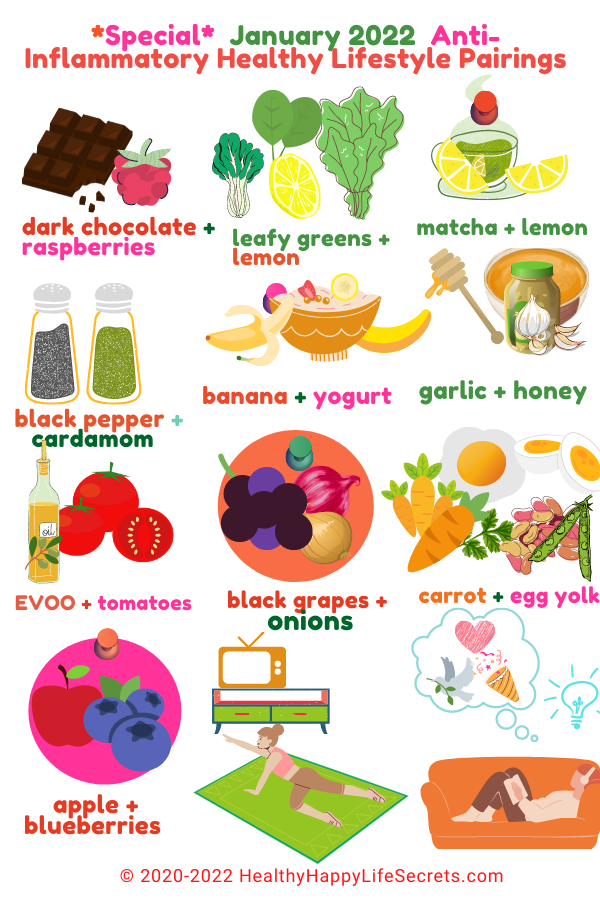Chili made with plant-based food ingredients is a good way to add more fiber and vitamin nutrients in your diet. And it’s filled with anti-inflammatory spices that add to longevity healthy points, if that’s one of your intentional desires.
Plus it’s super easy to blend a bowl of chili together using your Magic Bullet or blender. And in this case, for cabbage wraps.
Tofu is the plant-based protein behind these chili cabbage wraps.
I grew up eating tofu regularly so I’m used to the unique texture and odd taste, but some people are not.
…And if that’s you (or who you’re preparing meals or Game Day for), a chili dish is a good way to mask tofu. Kinda like hiding veggies in kids’ dinner plates.
And chili is a great way to add in veggies like nutritious cabbage.
Besides light and good for weight loss, green cabbage is a very economical add to meals.
There are many cabbage kinds (over 400 around the world), and green cabbage is a common one, that’s easy to find in grocery stores.
It’s often confused with Iceberg lettuce that’s lighter (in weight and color). You’ll notice the difference as green cabbage gets thicker as you peel back the layers and get closer to the middle core. The ribs are more pronounced.
Also, lettuce’s season is spring and summer. Cabbage takes over in fall and winter. So you can make wraps year-round.
Both veggies are healthy, but green cabbage has more Vitamin C and fiber. It also has special antioxidants (sulforaphane). It’s in the same food family as broccoli, cauliflower, and Brussels sprouts.
And wrapped around as a hearty veggie, a chili cabbage wrap makes for good comfort food during cooler months. Lett-uce celebrate that!
Next time you’re out shopping for tortilla, you might reconsider. With cabbage, you also save grocery money making wraps as a head of cabbage can be under $2, and chili cans (or pinto beans) are pennies per ounce.
Yeah cabbage! 🥬 And tofu that’s easy to find can be pennies per ounce. It’s usually found in the refrigerated food sections near deli meat or dairy, or where you would find fresh hummus (that’s another great easy Game Day or Magic Bullet recipe you can make).
You can make this an entire meal for two (or a small family) for under $5!
So to make this plant-based chili wrap, cut up the tofu with a non-sharp or silicone spatula, or wooden kitchen tools. Whether you get the softer, firm, or extra firm tofu, it will be easy to break up even with your hands.
It will look like a little like white scrambled eggs. Drain and cook the tofu scramble. Usually around 15 minutes on medium stove heat. Tofu in the common containers has a watery substance (that actually can be whipped into dessert meringues like aquafaba in garbanzo bean cans).
So the tofu will be wet, and you won’t need to add much liquid in your cooking skillet if any. And no (olive) oil needed to prevent skillet sticking, unless you want to add for taste.
After the tofu is cooked, add and heat up the tomato sauce.
Add some of the tofu mixture to your blender with all the spices, other wet, and dry ingredients.
Then add the chili or beans. This is where a quick blender comes in handy. Blend in chili beans (pinto beans).
Pulse the blender a few times or just enough for the beans to blend. The tofu mixture will look grainy.
To save time: you can prepare your cabbage leaves while the tofu is cooking, and you can cook the cabbage leaves when you’re blending the tofu and chili.
For spicy flavors: you can add hot spices like cayenne or your favorite hot sauce. But if you want to keep it mild and then let the heat preference be per wrap, then add sweet or mild pimento peppers. They’re bright red and easy to find (on market shelves).
The best chili has all the tastes: spicy heat (cayenne, chili, onions, garlic, or other peppers), savory (cumin), sweet (cinnamon, tomato sauce), salty (salt), umami (soy), bitter (cocoa), astringent (turmeric), and sour tastes (vinegar, tamarind).
You can add or omit any ingredient, and if you go with a spice blend make sure it has cumin and peppers are a must if you want chili tastes.
I used cayenne pepper (hot), red chili flakes (mild) , and pimento peppers (sweet) to give a balanced heat. But even black pepper will work (and help activate the healthy turmeric and cinnamon if added).
Chili is so versatile to your preferences and what you have on hand.. so you do you! You can’t go wrong.
And if you like this healthy plant-based recipe idea, you may like other Magic Bullet recipes and anti-inflammatory plant-based soups, like low-sodium vegetable soup or beet red cabbage soup. 🥣
Tofu Scramble Chil Cabbage Wrap - Plant Based
Ingredients
- 1 Tbsp soy sauce
- 1 Tbsp water
- 1 Tbsp vinegar (white or apple cider)
- 1 tsp red chili flakes
- 1 tsp turmeric
- 1 tsp garlic flakes
- 1 tsp pimento peppers
- 1 tsp cumin
- 1 tsp tamarind (optional)
- 1 tsp cocoa powder
- 1/2 tsp cinnamon
- 1/2 tsp salt (for chili)
- 1 tsp chopped red onions
- 14 oz tofu container
- 15.5 oz can of chili or pinto beans
- 8 oz tomato sauce
- 1 green cabbage head
- 1/2 tsp salt (for cooking cabbage)
Instructions
- On stove, cook chopped up (scrambled) tofu in a skillet (medium heat for about 15 minutes). Add water, if needed.
- While tofu is cooking, prepare cabbage wraps. Pull apart cabbage and wash.
- When tofu is about cooked ready, add/heat up tomato sauce and spices, and bring to a light boil. Take the tofu skillet off the stove and let cool.
- On stove, cook cabbage wraps in a separate pot (or pour tofu mixture in a big bowl and rinse out skillet to add cabbage wraps). Cook cabbage in water and about 1 tsp of salt until soft. Place cover or lid over skillet or pot. Tip: You can use the entire or part of the cabbage core to weigh down the cabbage leaves in a cooking pot as they tend to float up. After cooked, to dry the cabbage, place them on paper towels that you can re-use.
- In the blender, add about half-full warm tofu mixture and the remaining spices, wet, and dry ingredients. Add all the chili beans/can or until the blender is full.
- Quick-pulse blend a few times. Add a little more of the tofu (chili) and shake the blender by hand or pulse blend a few times on the base, depending on the final tofu texture you want. If you shake by hand, you'll get a more crumbly tofu vs. pureed tofu from machine action.
- Add blended tofu chili to individual cabbage leaves to make wraps. You can add the remaining tofu and any remaining chili to the blender. This should make 3+ cups of tofu chili that can fill at least 6 full cabbage wraps. You can save the additional cabbage for a soup or freeze for another time.
















